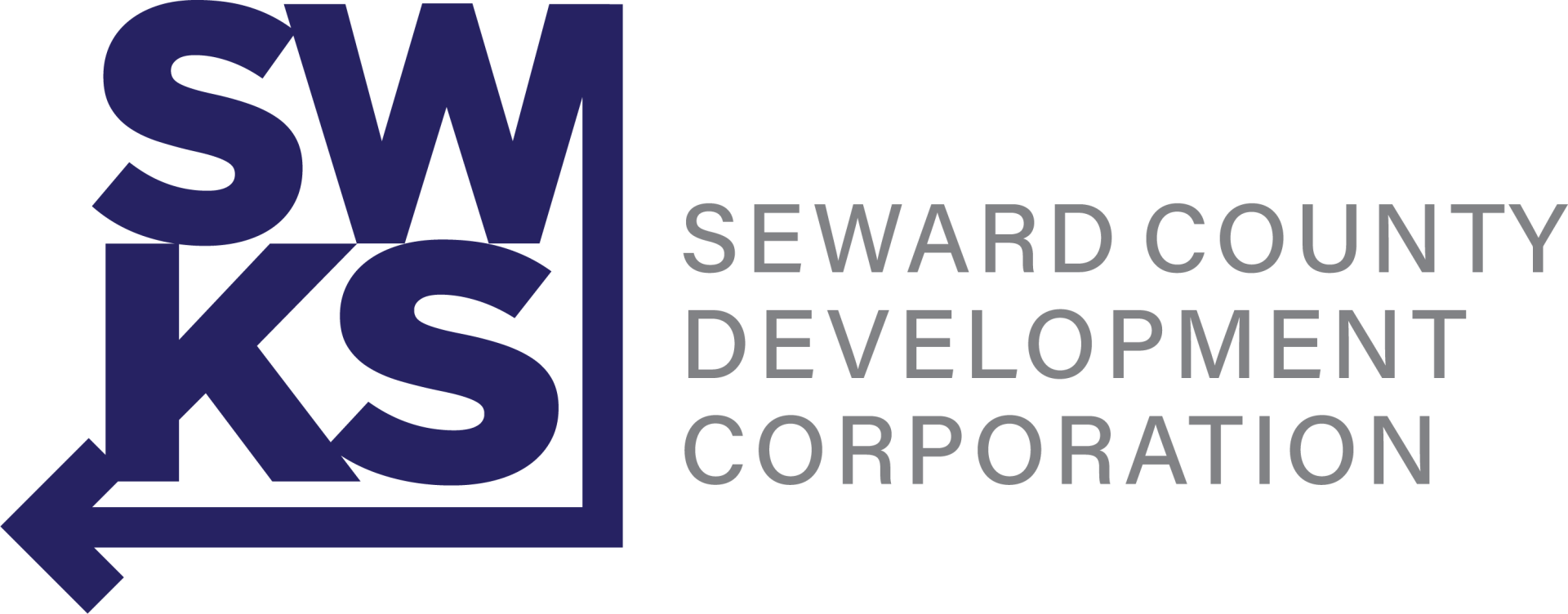November 2021 Newsletter
The Walking Dilemma

In the May Newsletter, I mentioned the walkers I met at the fountain outside the Landmark Building. They were participating in the Sunflower Sod Stomper challenge to walk a 5k in Southwest Kansas, much of that in our very own downtown district. Several details from that interaction still resonate. These walkers--and the others from that group that I met--were captivated by both the Landmark Building and other facades they passed. Outside of these tourists, it is rare to see people walking in our downtown.
I'll be the first to admit it: walking downtown right now is a battle of willpower. I try to walk our main street when I need to visit with a business owner, but I am often the only one on the sidewalk. It can feel like a very lonely place. Vehicles are speeding by and the sidewalk we have left is rather narrow. But I keep walking because I believe that when people start seeing other people on the sidewalks, they'll join.
This walking dilemma is true in downtowns across the country. We live in a world that expects curbside access to everything. If we can't park directly in front of the business, we'll leave and settle for our next choice. One developer in Pittsburg, Kansas said it this way, "We don't have a parking problem; we have a walking problem." We have to remember that it's worth our time and energy to park around the corner or in a public lot and walk a few extra steps to support the local shops.
But asking people to walk is not our only option. Research has shown that angled parking increases the number of available parking spots compared to parallel parking, and each spot leads to increased sales for retail stores along that block. These spots also support additional parking for handicapped individuals who need curbside access.
The components that revitalize a downtown are many: restaurants, retail boutiques, salons and spas, professional services, second-floor apartments, parking, traffic flow, events, etc. Most of these take time and money to initiate, but we can change the biggest component right now: people. As we enjoy these nice Fall days, grab a sandwich from One Way Deli and eat it in the plaza. Buy a shake from 620 Nutrition or a pastry from La Princessa Bakery while you visit one of the boutiques or meet your friend at one of the day spas. Have lunch at Brickhouse and then do some early Christmas shopping at The Flower Basket. Or just park somewhere and walk. The sidewalks won't be lonely if we're all there together.
Kansas Micro-Internships Available NOW!
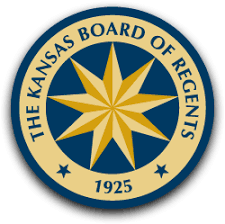
In early October, I was able to attend the Workforce Innovation Conference in Wichita. Sponsored by KansasWorks and the Department of Commerce, this two-day event brought employers and educators from across the state to discuss our current workforce issues and share exciting opportunities that are available now. One session explained the Kansas Board of Regents Micro-Internship Program, which has the potential to enhance the capacity of rural business owners and launch the careers of Kansas students. Here are the basics:
Micro-Internships are short-term and paid projects
- Projects typically range from 10-40 hours in duration
- The average cost to a company is between $200-$400 (fixed fee, implying $20/hour)
- Assignments are similar to those given to interns or new hires
- Projects are used across all departments and industries (Click here for examples)
- Micro-internships provide busy professionals with additional resources
- Available year-round as needed and typically done remotely
Program Overview
- Kansas employers who hire eligible students may request 50% match for micro-internship program grants of ut to $250 per project (for a max of two projects)
- Only students enrolled in Kansas public colleges and universities are eligible to participate in this program (This includes SCCC)
- Eligible employers include for-profit and not-for-profit organizations
- Funding for the program is provided by the DeBruce Foundation
As the business owner, you can post projects to the micro-internship site and then select the best applicant based on the responses. Once the work is completed, you can review the product. Payment is held in escrow until approved. If the product is not satisfactory, it can be redone by the same or a different student.
For businesses, this provides access to short-term and low-cost support. For students, this builds resumes and creates relationships with Kansas employers.
To learn more about the program, contact Eli (eli@swks.org). If you are interested in creating your business profile and posting micro-internship projects, visit https://www.parkerdewey.com/
Center for Economic Development and Research

Each year, the Center for Economic Development and Research (CEDBR) at Wichita State University, compiles data on economic trends. These are shared with stakeholders through local and regional public forums. Seward County's was held October 20 at Equity Bank. Below are several slides that represent positive trends in our local economy.
The Seward County Index
The graph included below represents the Economic Conditions Index for Seward County. The CEDBR County Economic Conditions Index is based on employment, retail sales, average wages, and the unemployment rate. While this graph includes the challenges of 2016 in both the Ag Industry and the Oil and Gas Industry, we are showing steady improvement since then with only slight downturns.
Economic Dynamism
The table and state map capture the Economic Dynamism Index for 2021. CEDBR calculates this index each year based on the categories in the table: Industry Diversification, Expansion, and Labor Churn. Within each category, please note the subcategories and the weight associated with each for this formula. Based on the research and formula, Seward County ranks 6th highest in the state for Economic Dynamism. This is an encouraging statistic and is a testament to our local businesses and industries and their commitment to growth in our county as well as our local residents and their ability to advance in the workforce.
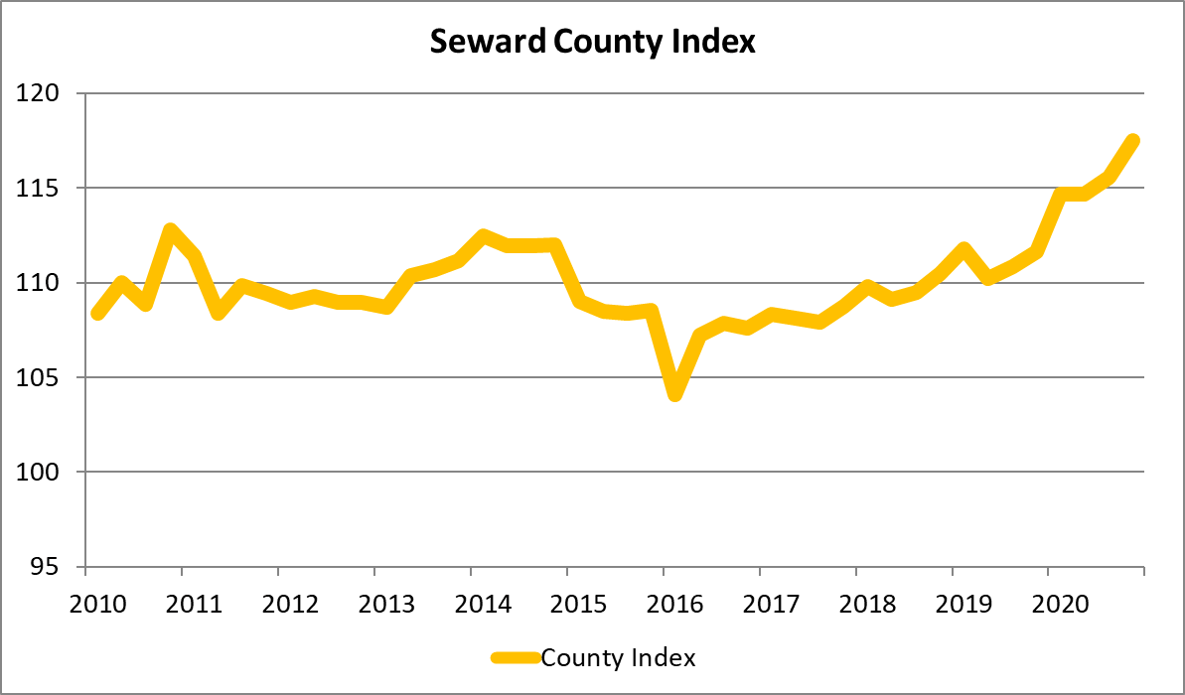
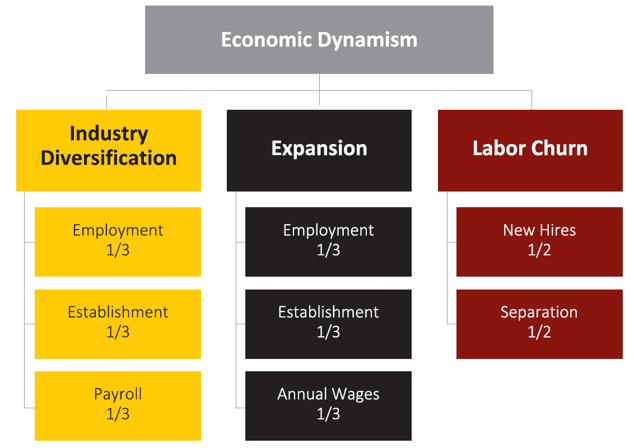
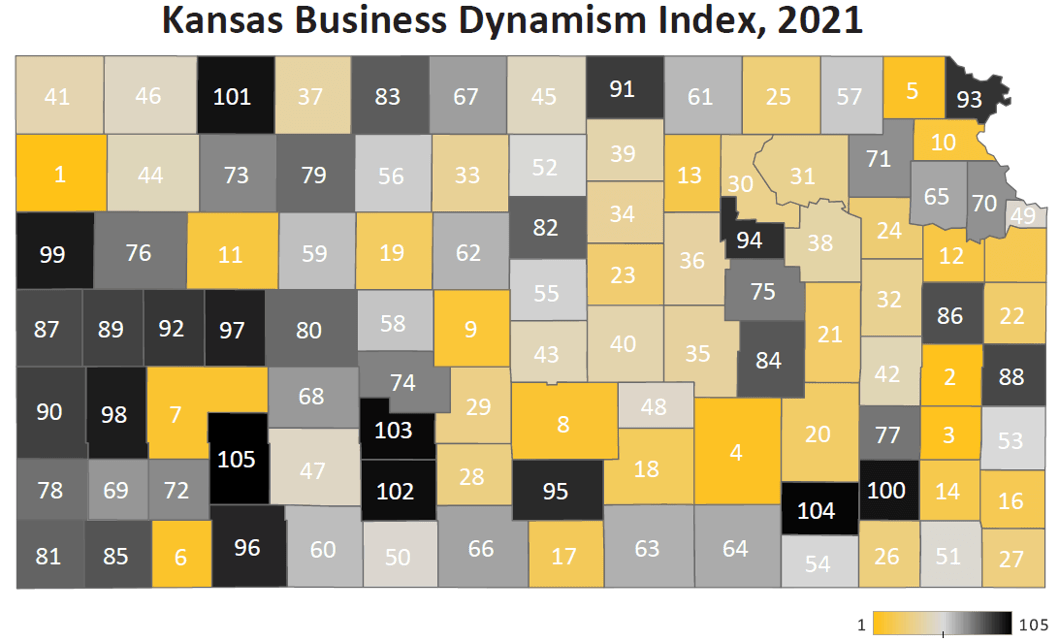
Baker Business Socials

On October 21, the Seward County Development Corporation hosted the first business networking event at the Baker Kitchen. We had a good mix of students and business representatives at the event. Everyone who attended agreed that that more events like this need to happen. The networking provided priceless training for the students, and it was great for different business owners to mingle as well. A special thank you to Billy's for catering the event.
Don't miss out on these upcoming events.
- Local Angel Investment Group
- December 9, 2021 5:30-7:30pm
- Trish Brasted of Network Kansas and Accelerate Venture Partners will be joining us to share her more than twenty years of experience with Angel Investment Groups. We will discuss opportunities for local investment in Seward County and how to build a team of active investors to support local innovation and start-ups. If you'd like to be a part of this group--seeking financial returns through your investments in local business ventures--please contact Eli. The list of attendees is growing, and spots are limited.
- Invitation Required. Contact Eli if you're interested in attending (eli@swks.org)
- Tech Innovation in Rural Kansas
- The Center of Rural Innovation will begin its work in Liberal in early 2022. This Rural Innovation Initiative has the potential to add new opportunities in our local economy and support the tech needs of our existing businesses. We need your input as business owners and community members. This evening will be an opportunity for you to share the needs that your business currently faces, brainstorm ways that we can expand tech jobs in the community, and engage with the CORI team as we work to diversity our local economy.
- Home Business Expansion
- Even before the pandemic, people were building and making products in their homes and selling them both locally and nationally. As a community and economic development organization, we love these entrepreneurs and want to ensure that they know about the resources available to them both through our office and through our network partners. This evening will highlight financing options, labeling support, and home business needs. Anyone who has a home business should attend this event.
Specific dates and times for these events will be shared closer to the event. If you know you are interested in attending one of these topics, or you know someone who would be, please contact Eli at the Seward County Development Corporation. Your name will be added to the attendee list, as some of these events will be invitation only.

Rural Opportunity Zone (ROZ) Reminder
Don't forget about our benefits in Seward County for new hires who are moving to the community for the job. Beginning January 1, 2022, these new employees may be eligible for both student loan repayment and state income tax credit. The student loan repayment requires a 50/50 match from the employer; however, the income tax credit is available at no cost to the employer or the employee. 1. Student Loan Repayment Assistance
• Administered By Kansas Department of Commerce (KDC)
• Partners with Counties, Cities, Employers, and Foundations
• Provides up to $15,000 in Student Loan Repayment Assistance over 5 years
2. 100 % State Income Tax Credit
• Administered By Kansas Department of Revenue (KDOR)
• Filed with state taxes; only eligible with online filing on KDOR website
•https://www.ksrevenue.org/prtaxcredits-roz.html
To learn more about the program or to see if you or your employees might qualify, contact Eli or visit the ROZ website at the Kansas Department of Commerce.
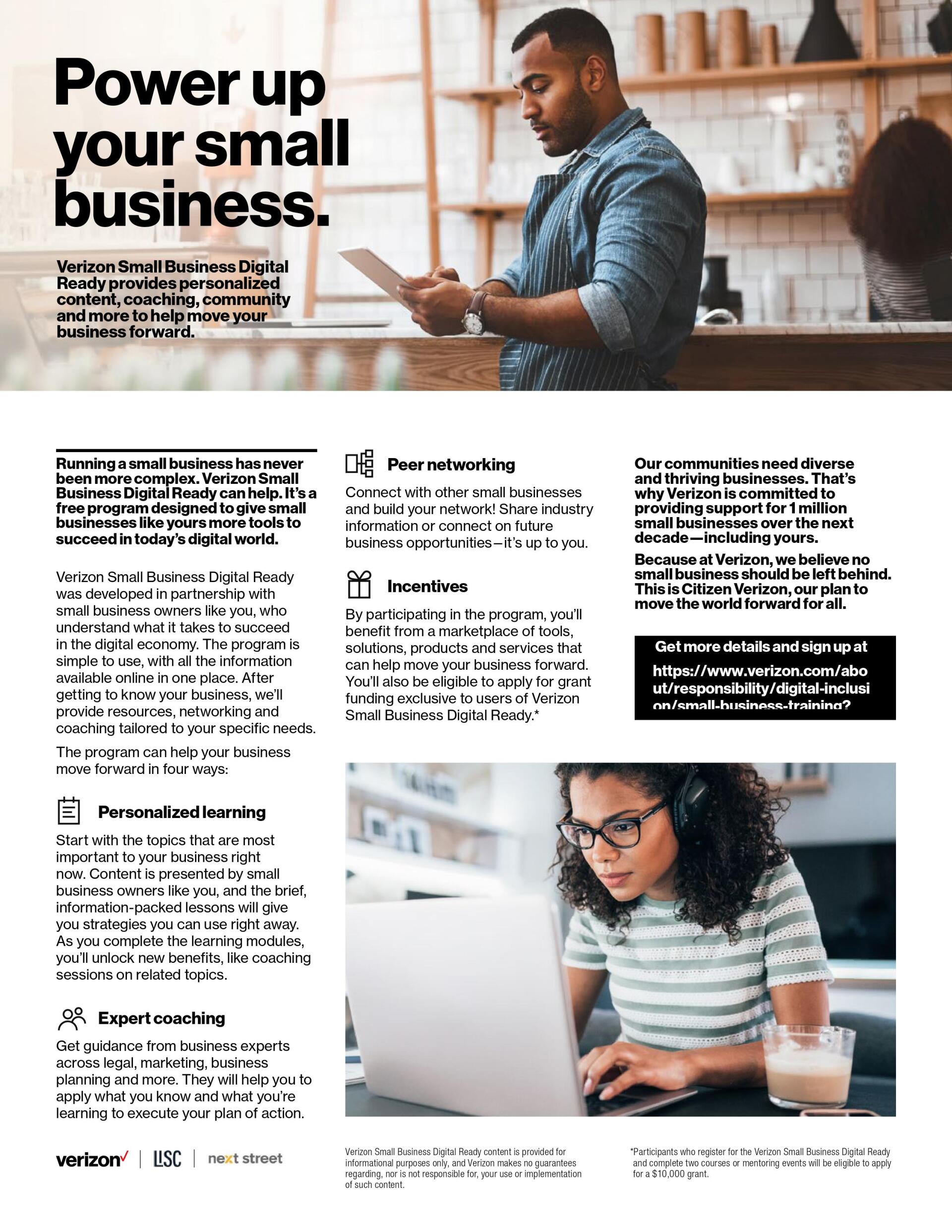
What we're doing this month!

The majority of our work at the development corporation consists of supporting local entrepreneurs and businesses as they start or expand their operations. Through our partners, we can provide the expertise and the funding that these ventures need in order to be successful. These same partners and networks also connect us to resources outside of Seward County. This month will bring new opportunities for learning and networking that can help the businesses and communities here at home.
- November 4: Legislative Appreciation Dinner (Southwest Kansas Chamber of Commerce)
- November 9: Dairy Expansion and Soil Health (Kansas Soil Health Alliance)
- November 25-26: Thanksgiving Holiday (Office will be closed)
City of Liberal Economic Development News
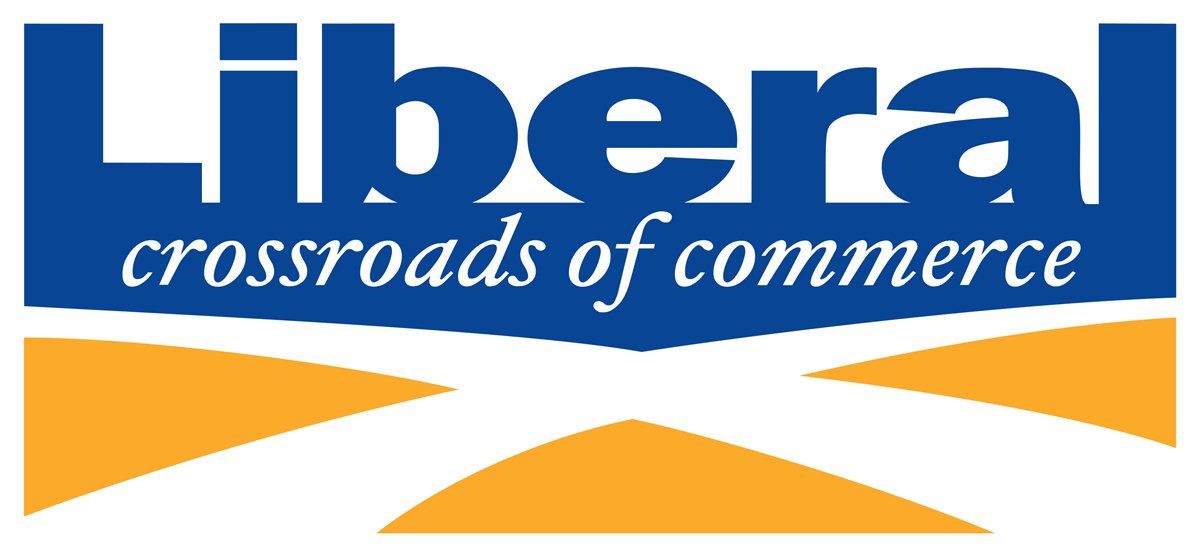
Interesting Facts and Statistics
Cindy Wallace, City of Liberal Economic Development Director
I receive a weekly newsletter from Dane Carlson of Econ Dev Show that has many articles and statistics of interest to those in the economic development field and beyond. With the holiday shopping now in full force here are a few excerpts to share:Real cost of inflation to the average American household: An extra $175 a month.- Diesel stockpiles are at a 20-year low as U.S. heads into winter. The current stockpile covers only 31.2 days of demand.
- Supply chain havoc is getting worse- just in time for holiday shopping: The most popular holiday gifts might not arrive on time for the holidays, even if you order now.
- Postal service is about to get slower and more expensive.
- Smaller packs, same price. Supermarkets and food brands are sneaking through price changes by shrinking pack sizes called “Shrinkflation” to wrestle with rising commodity, energy and labor costs.
- For the first time since early July, two-thirds (66%) of U.S. adults feel comfortable eating out at restaurants and half (50%) are comfortable going to a movie theater.
With people buying more and more online, do you know what happens to the items you order online after you send it back? Estimates vary, but in the past year one-third to one-half of all clothing bought in the United States came from the internet. Much of this accelerated by months of pandemic restrictions and shortages. But one of e-commerce’s biggest problems are returns. The average brick-and-mortar store has a return rate in the single digits, but online, the average rate is between 15-30%. For clothing, it is usually higher. Last year, U.S. retailers took back more than $100 billion in merchandise sold online.
All of that unwanted stuff piles up. Where does it go? Some of it will be diverted into a global shadow industry of bulk resellers, some of it will be stripped for valuable parts, and some of it will go directly into an incinerator or a landfill! The things you return probably isn’t restocked and sent back out to another hopeful owner. Many retailers don’t allow any opened product to be resold as new. Brick-and-mortar stores with returns directly to the place where they were sold can be deemed close enough to be new and sold again. Returns are a fact of life, but chances are much slimmer of returns if you can see the item first-hand, try it on to see if it fits, touch it, etc.
The City of Liberal reminds you to “Shop Local” this holiday season and all year long and support our merchants. They are the ones who donate to your local ball teams, supply jobs and give back to the community. To learn more about the City of Liberal Economic Development Department contact Cindy Wallace, Director at 620-626-2256, email cindy.wallace@cityofliberal.org or visit our website at chooseliberal.com.
